

Derek Fung
Revived Ram 1500 TRX could debut on New Year's Day
1 Day Ago
Mazda’s mid-spec dual-cab 4x4 pick-up remains a fetching and mature alternative to the popular HiLux and Ranger.
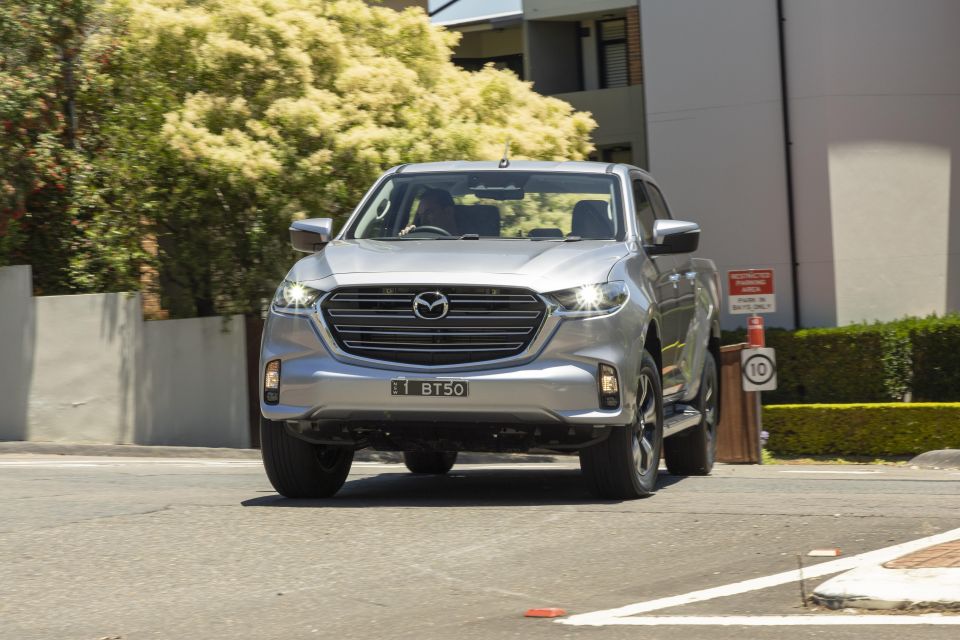
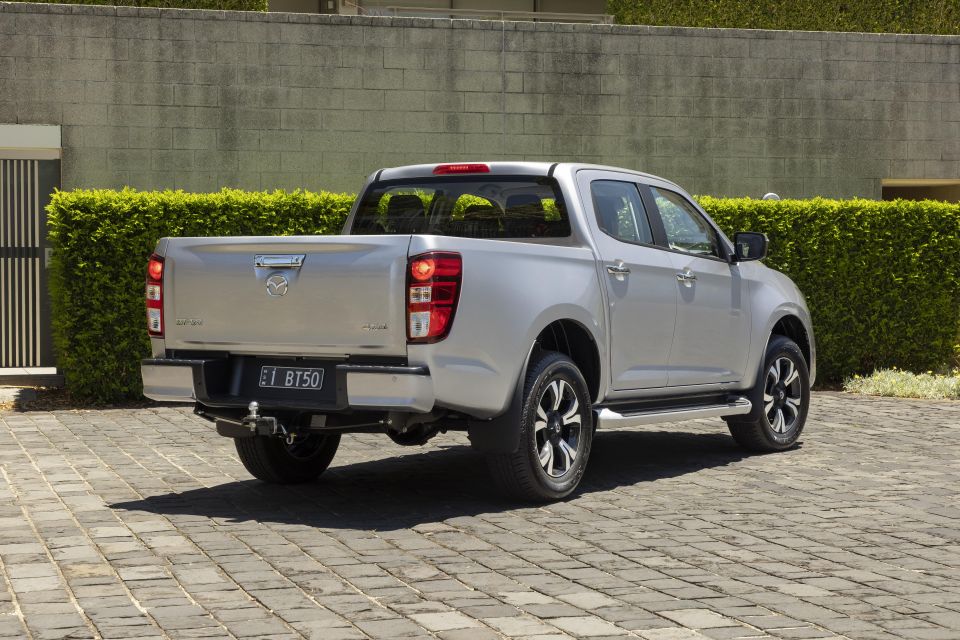

Quickly see how this car stacks up against its competition. Select any benchmark to see more details.
Where expert car reviews meet expert car buying – CarExpert gives you trusted advice, personalised service and real savings on your next new car.
It’s been over a year since Mazda’s reimagined Isuzu-twinned BT-50 showed its fresh ‘Kodo’ face on local terra firma, so it’s time for unearthing the XTR dual cab 4×4 pick-up’s new tricks.
Some 14 months on, this variant remains largely unchanged even if the landscape has shifted a little. The paint has well and truly cured on the big Mazda’s local presence and it’s easier to step back and size up the BT-50 with perspective and experience.
The Mazda BT-50 hasn’t been as popular as the mechanically related (if stylistically different) Isuzu D-Max thus far, while neither have managed to knock the Toyota HiLux or the Ford Ranger from their sales thrones.

Despite this, it has spent a couple of months making tidy business outselling the rest of the Mazda range. There have even been publicised supply issues too. The BT-50 range has recently expanded for 2022, with new variants and a broader choice of engines.
We forecast the BT-50’s relative lack of success back at its launch – going for a passenger car aesthetic rather than tough truck was going to be a risky call. Isuzu’s bolder Tonka styling for D-Max, particularly in flagship X-Terrain guise, is a big reason why it sits as the third-best-selling ute range in Oz.
Now the BT-50 has become more familiar and it casts it net more broadly with a wide range, is the BT-50 about to find homes in more Australian garages? Possibly.
Whatever the case, you should shortlist the BT-50 in its highly palatable XTR 4×4 dual-cab pick-up form, which is designed to succeed in both workhorse and lifestyle roles.
The current list price for this mid-ranger is $56,490 plus on-road costs, which is cheaper than last time I reviewed one in October 2020 ($57,210). That’s for the 4×4 automatic – choosing a manual gearbox drops the price by $2500.
Prefer 4×2? The auto-only rear-drive XTR dual-cab pick-up, the highest 4×2 grade on offer, clocks in at $48,990 saving a fair $7500 if you really don’t want or need 4×4 drive. If you do prefer 4×4 you’re really spoilt for choice in the BT-50 range.
2022 Mazda BT-50 pricing:
4×2
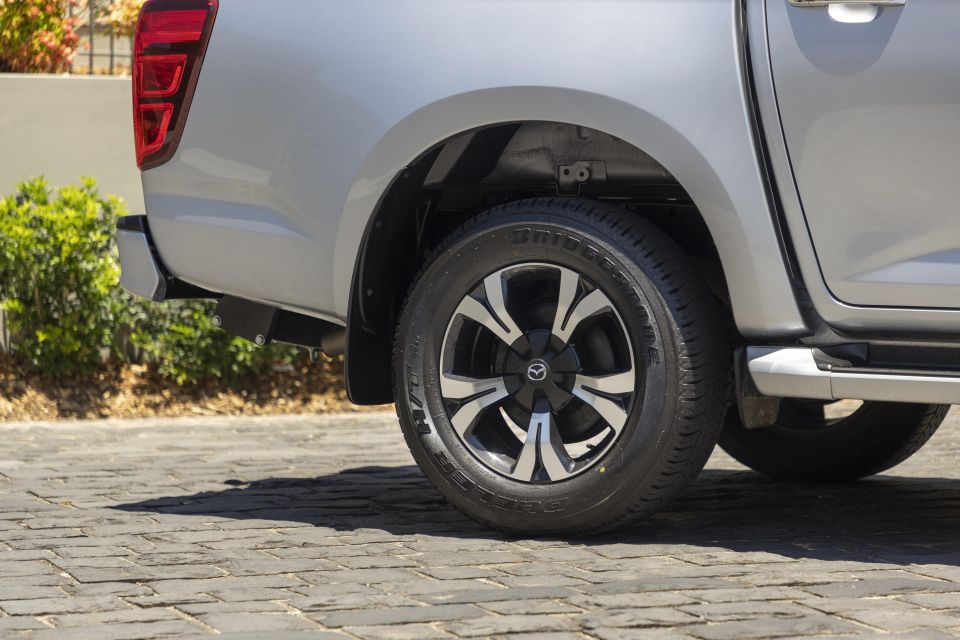
4×4
Prices are drive-away for ABN holders
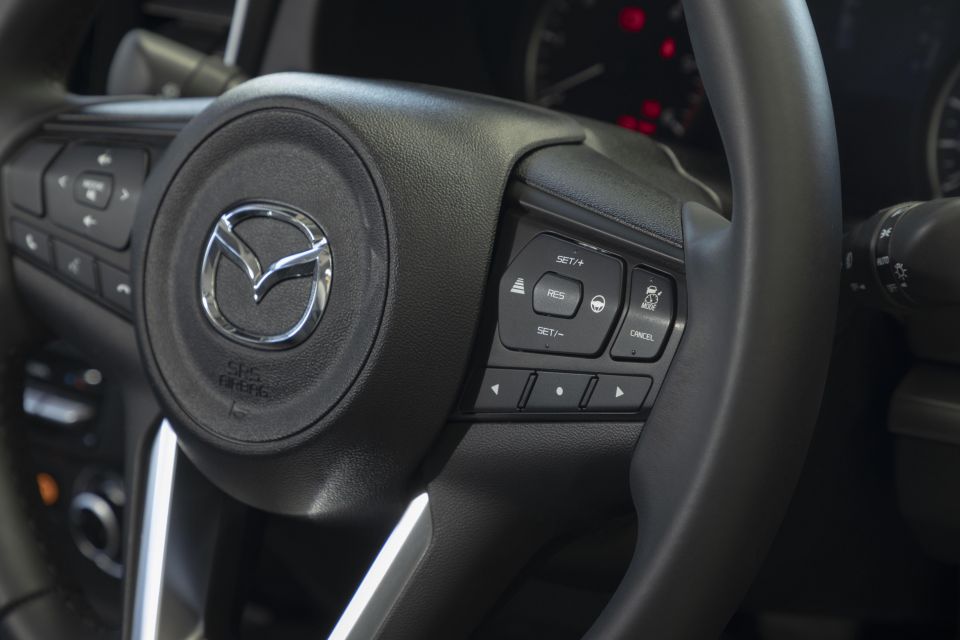
How does the BT-50 XTR fare against the usual rivals?
The Toyota HiLux SR5 Double Cab ($58,680) is a little pricier, while the soon-to-be-replaced Ford Ranger XLT 3.2 Double Cab ($57,490) could be a bit of an investment punt as it heads into run-out over the next few months.
The next-generation model has already been priced for our market ahead of first deliveries commencing in mid-2022, with the XLT Dual Cab 2.0 BiTurbo listing from $61,190 plus on-roads.
Isuzu D-Max? The LS-M Crew Cab pick-up auto ($54,000) is cheaper, while the next step up LS-U ($59,400) has had a recent price rise for MY22, pegging it more closely to the BT-50 GT ($59,990).
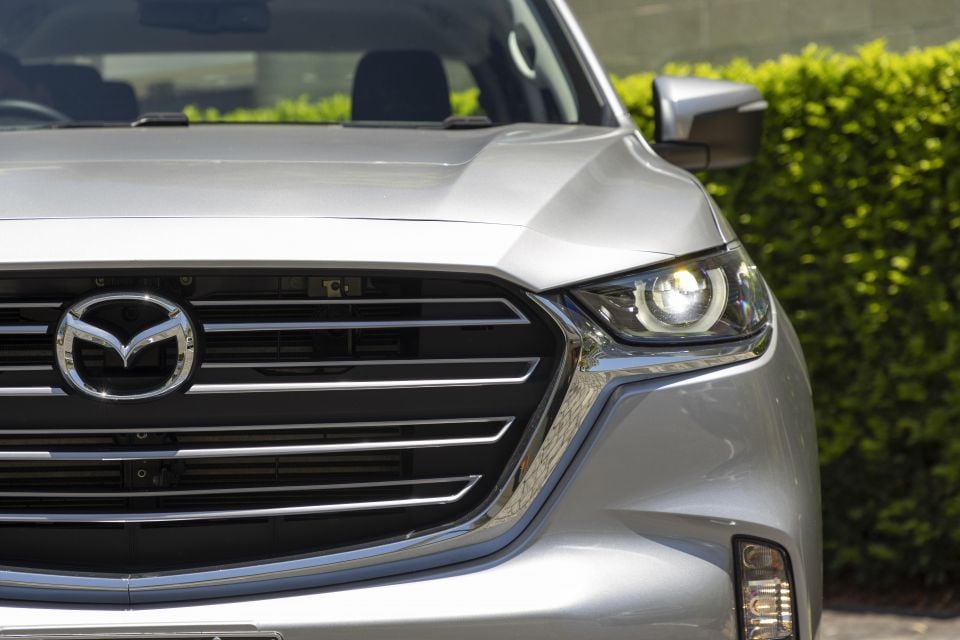
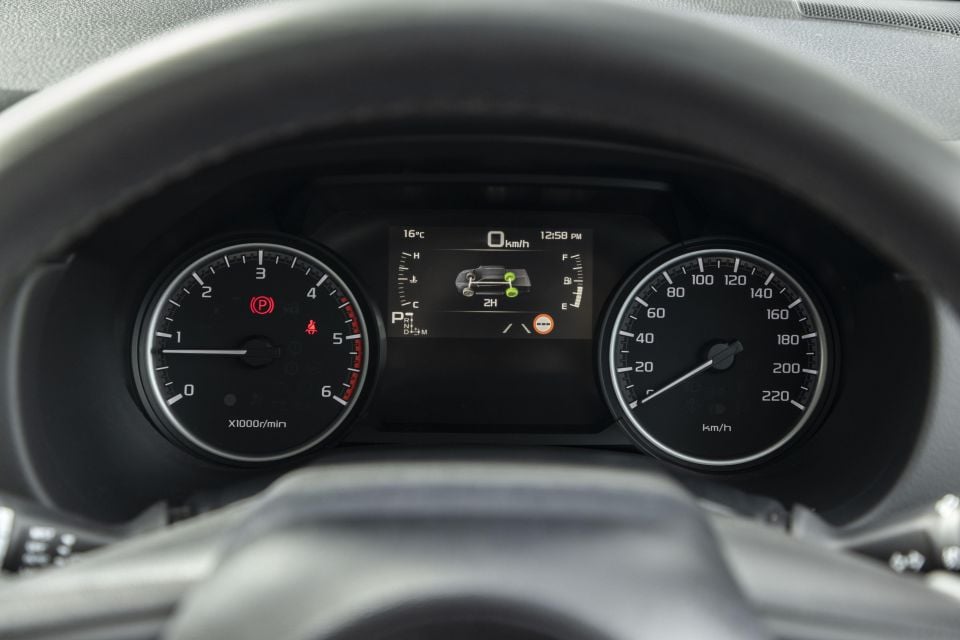
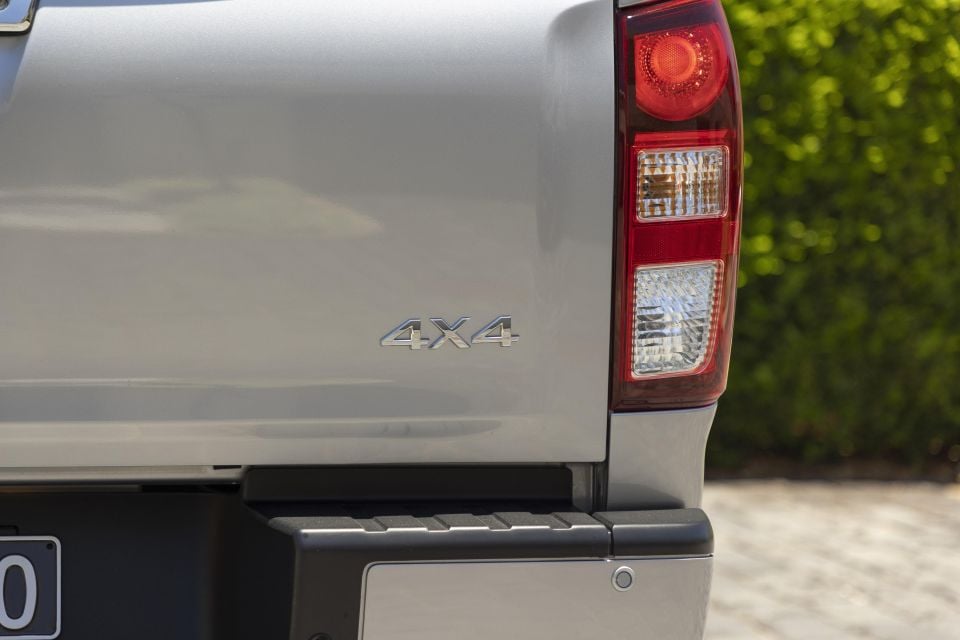
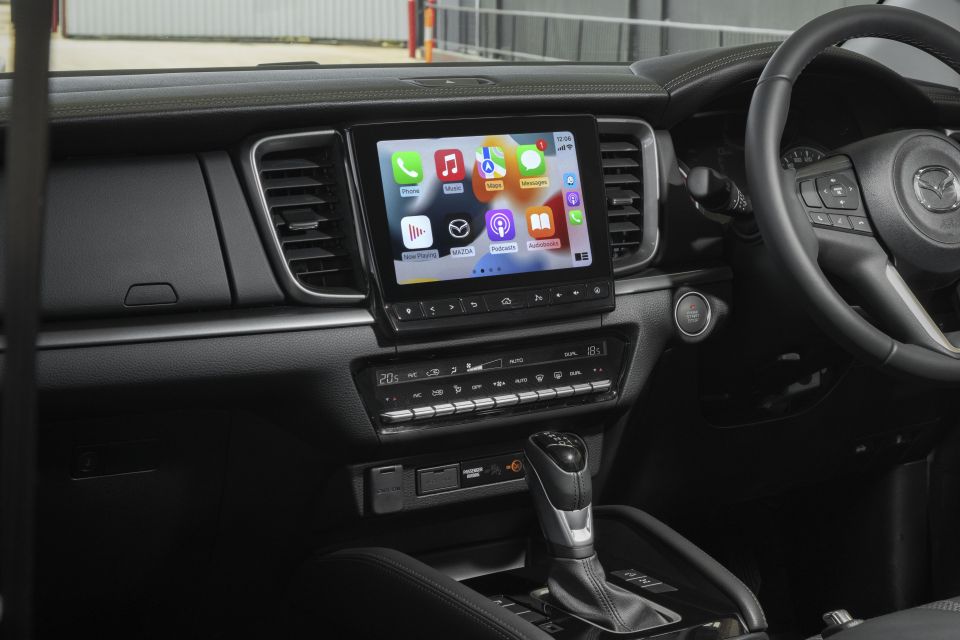
Buy your new car without the stress. It's fast, simple and completely free.

Great service from Travis and team, second time I have used this business would not hesitate to recommend them to anyone
Craig C.
Purchased a Ford Ranger in Sunshine Coast, QLD
CarExpert helped Craig save thousands on his Ford Ranger, now let us save you on your next new car.
Find a dealBT-50 XTR highlights:
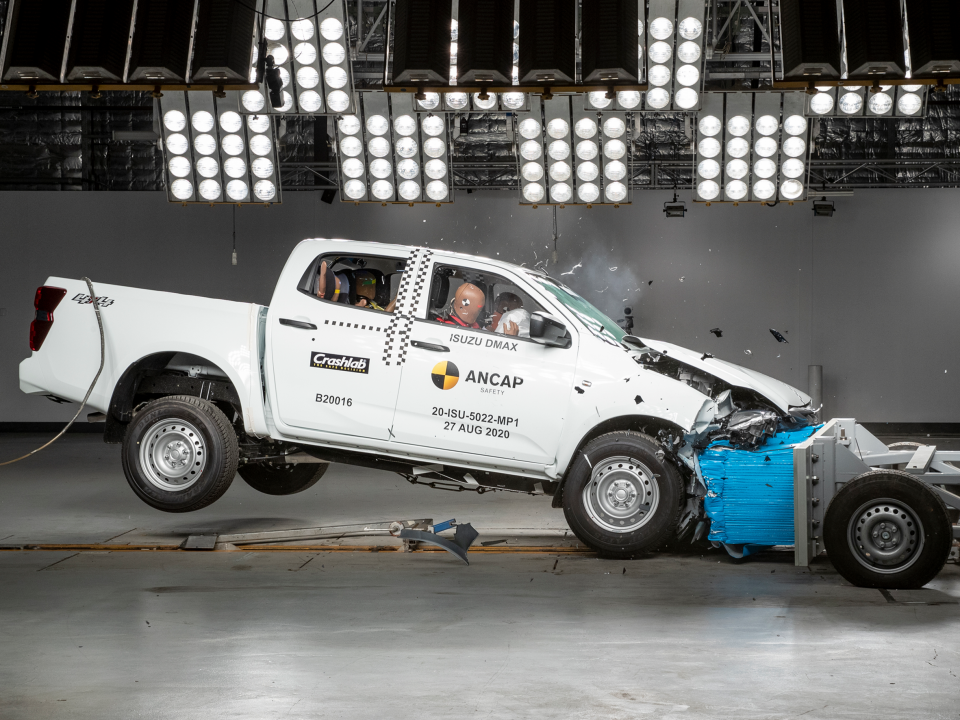
The Mazda BT-50 wears a five-star ANCAP safety rating with 2020 datestamp, based on assessment conducted on the technically-related Isuzu D-Max. It applies to all variants except the flagship Thunder.
Category scores included 83 per cent for adult occupant protection, 89 per cent for child occupant protection, 67 per cent for vulnerable road user protection and 84 per cent for safety assist.
All Mazda BT-50 models come standard with:
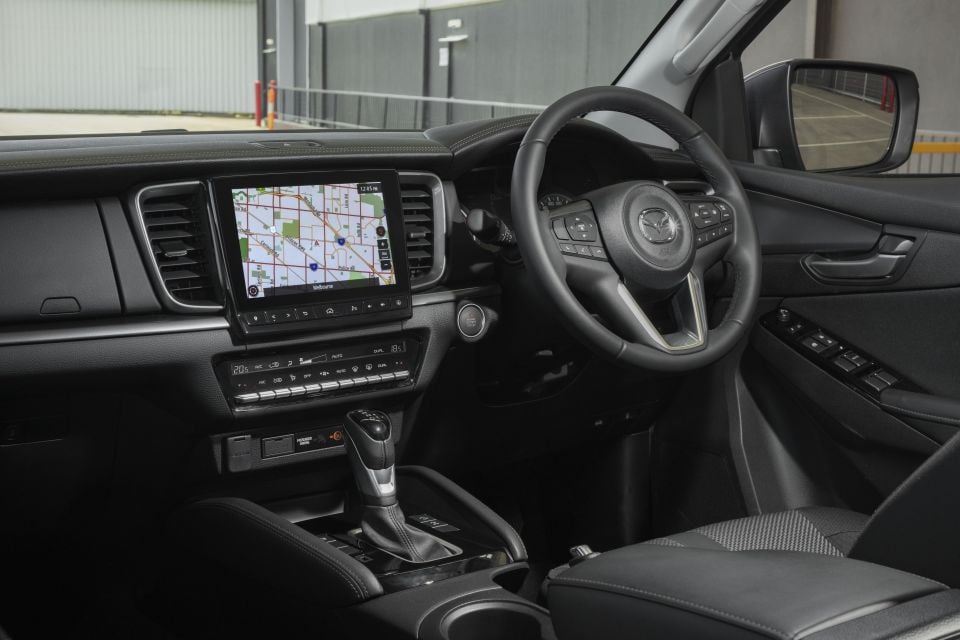
Many will have a strong opinion on Mazda’s take on pick-up styling. Your author is a fan, because there’s a certain maturity that bucks the proverbial ‘wear-it-on-your-sleeves’, mud-slinging style. Your author also isn’t a typical dual-cab target buyer, either.
That the four-door BT-50 looks a bit like a jacked-up Mazda SUV with a large tub will only please some tastes.
The general passenger car vibe carries over inside, which is clearly minted from similar stock as a D-Max. This is unsurprising really as the two breeds even roll off the same Thai assembly line, although Mazda tries oh-so hard to convince you it’s cut from the same cloth as its Japanese road cars.

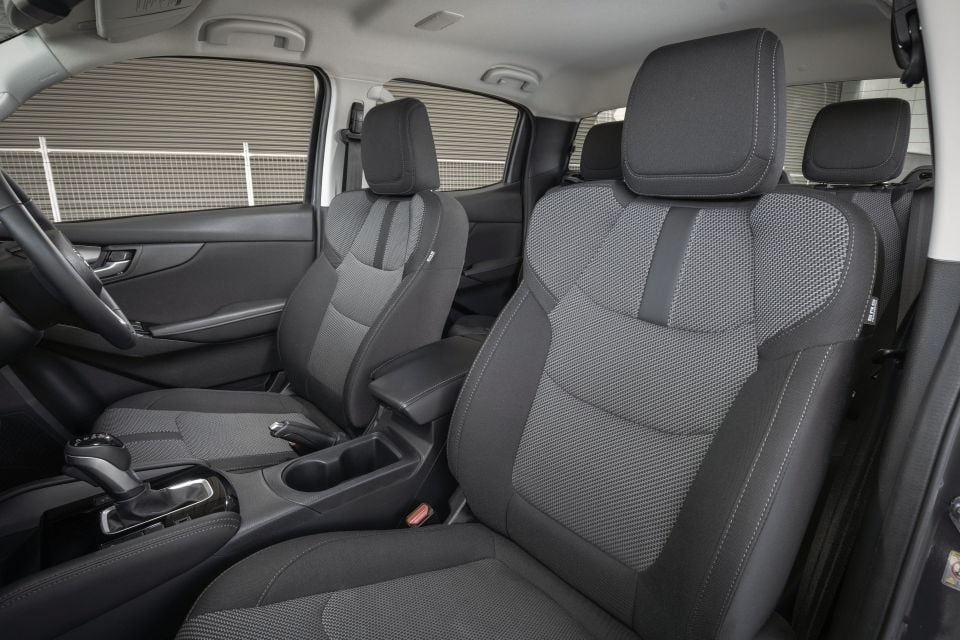
So you get Mazda’s multifunction wheel and a typically austere Mazda colour scheme. It is one of the nicer dual-cab cabins out there, even in mid-spec with hardy cloth trim, and the soft touchpoints and dash top do soften the truck vibe.
But while it’s nice for a dual-cab, a segment hardly big on plush pleasantries, it’s not nearly as nice, slick or as well integrated as Mazda’s nicer, newer passenger cars – even cars asking way less money.
It looks a bit Mazda-like, but doesn’t feel convincing. That’s no fault of Mazda – until buyers cool their demand for lifestyle trucks and start demanding genuine quality interiors – the vehicles offered will still carry relatively low-rent cabins at high-rent prices.
The bluff and edgy design theme is tidy, clear and logical. The leather wheel is nicely tactile – none of that urethane rubbish – and the fabric on the seats and door inserts are nice touches. But a lot of the execution is quite basic, from the rudimentary plastics to the ordinary driver’s instrumentation.
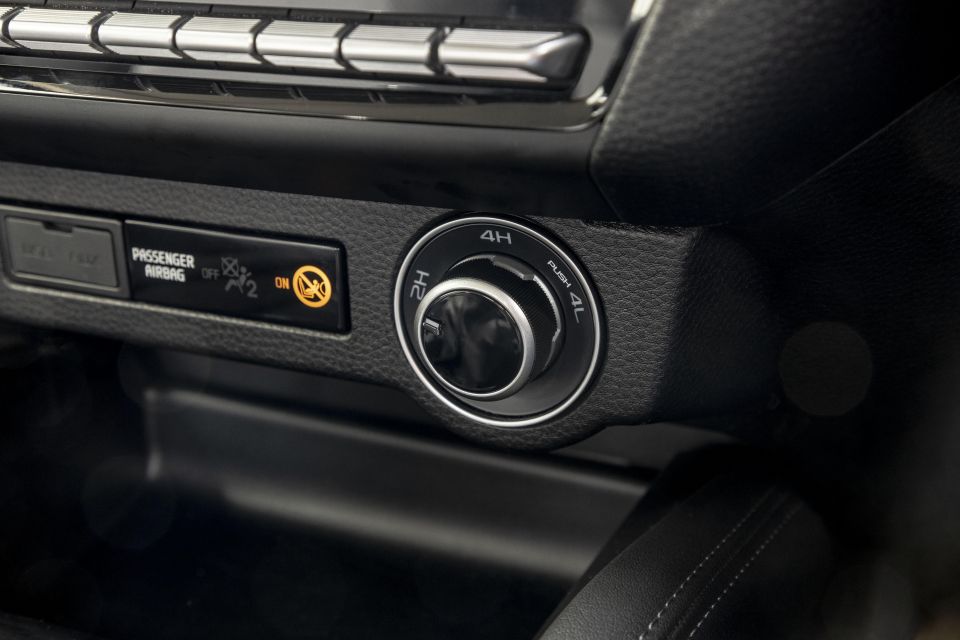
Perhaps things get nicer further up the BT-50 tree once you arrive at the $60k-plus GT stuff…
It’s quite a resolved and pleasing space to spend time, though some of the strange design quirks noted in past reviews haven’t been shaken out of the package yet.
The proud hump in the driver’s seat back remains, the sun visor still fouls against the rear-view mirror, and the front cupholders pop the lids of anything smaller than a jumbo-size cup, sending latte across the console top. There’s still no volume knob either.

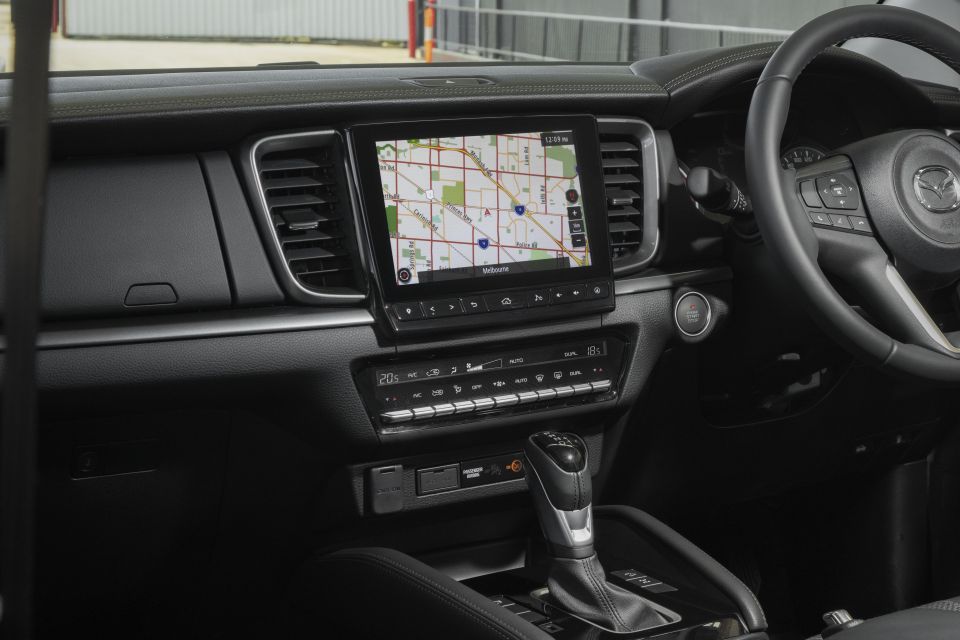
On that topic, the 9.0-inch infotainment system is fine rather than exceptional, with workmanlike resolution and processing speed. Wireless Apple CarPlay does mean you can avoid some of the clunky proprietary features, but it is prone to hiccups and takes forever to reboot after the BT-50 has been restarted.
A grainy reversing camera and old-school sat-nav also feature, though while it’s perfectly functional it’s not a patch on the systems fitted to Mazda’s road cars. It’s worth noting the BT-50 runs Isuzu’s infotainment interface and not Mazda’s in-house MZD Connect or Mazda Connect systems.
There are some neat touches shared with D-Max, such as the ‘upper’ secondary glove box and the extra pop-out cupholders in the dash fascia. There’s plenty of storage, including bottle holders in the doors, but device connectivity/power is limited and there are no frills such as inductive phone charging, which is a bit of rarity in this segment.
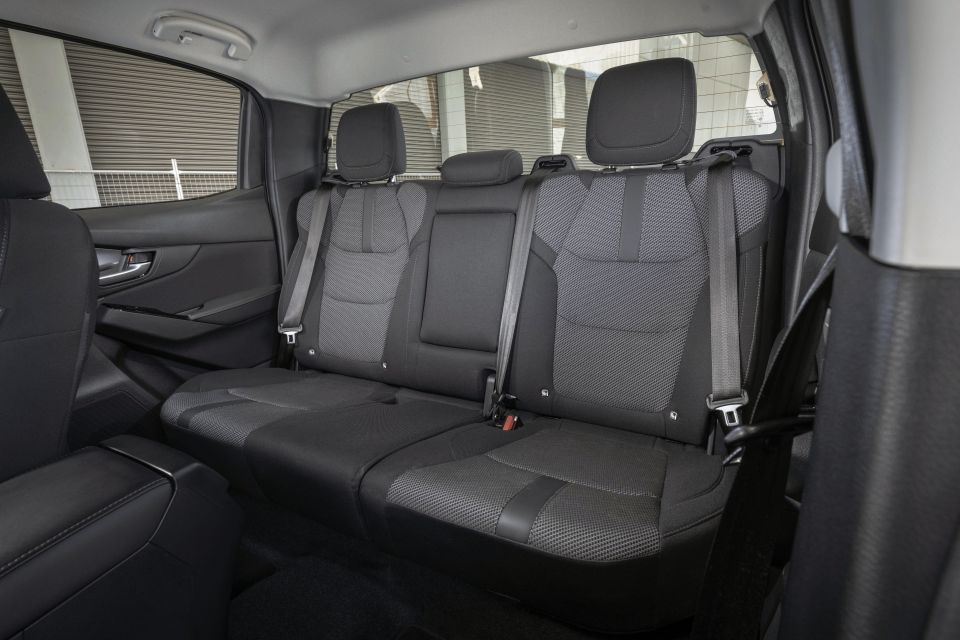
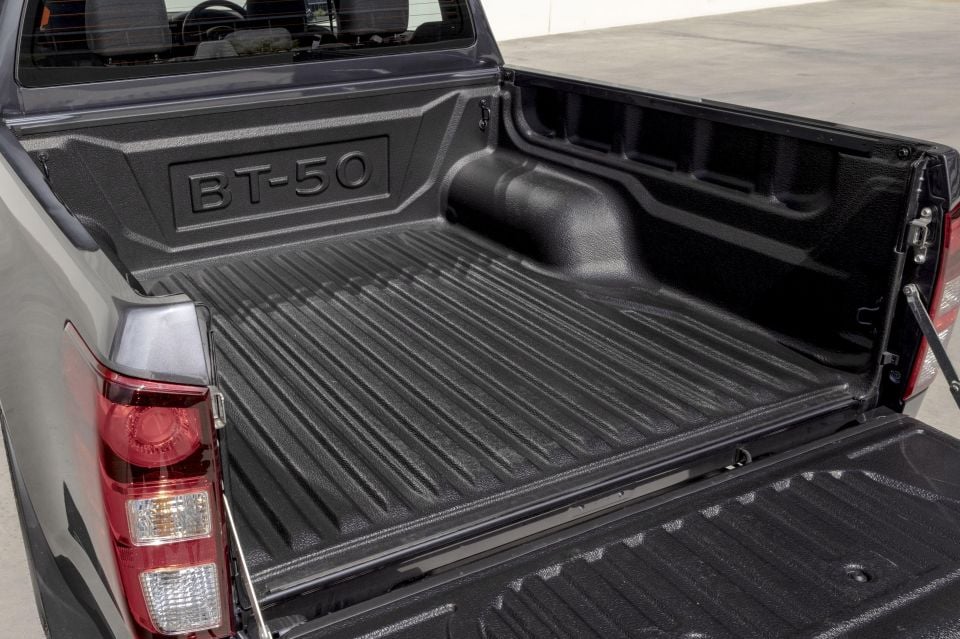
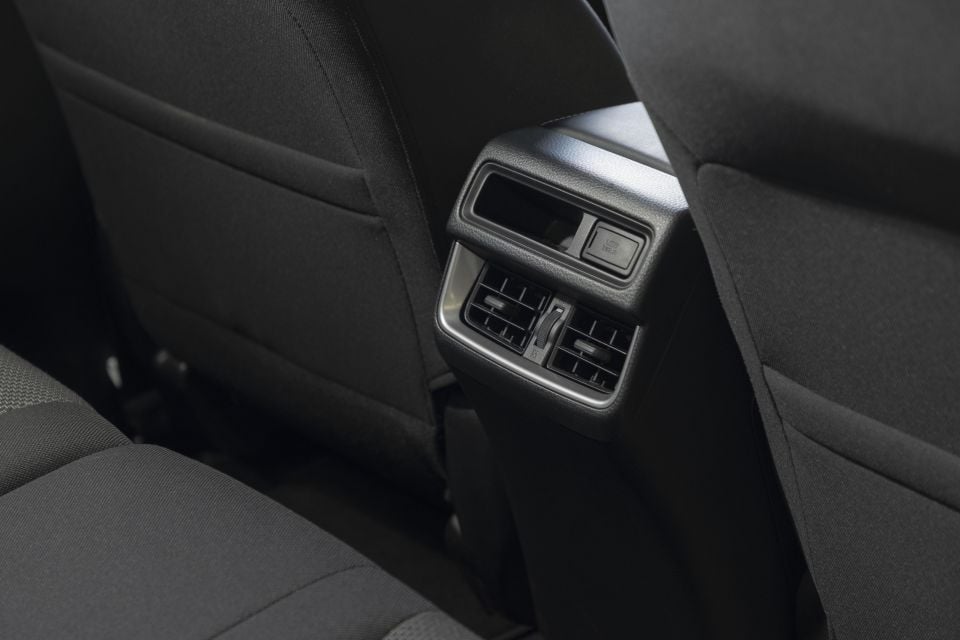
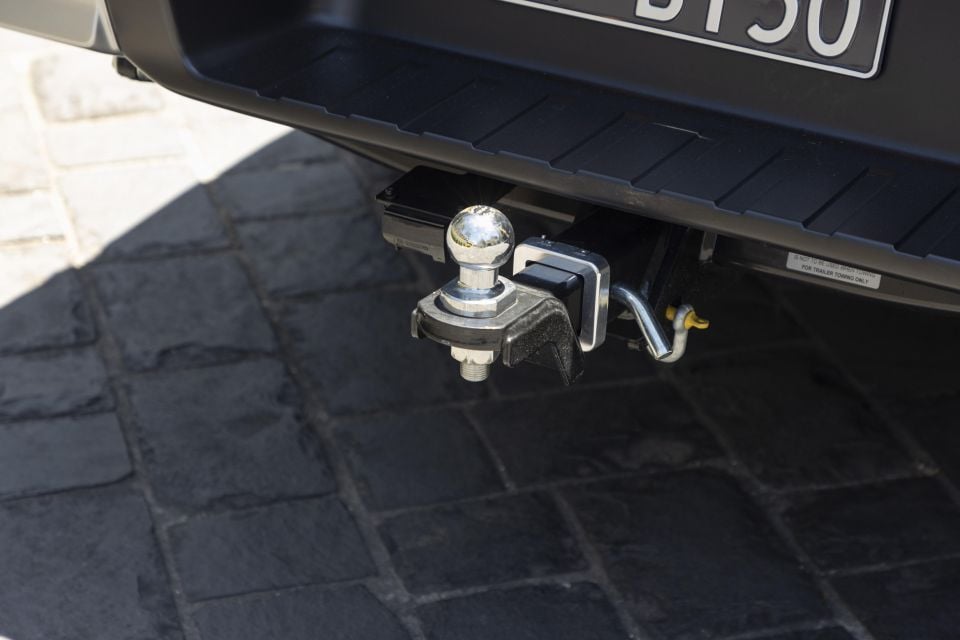
At least the rear seat-backs have a pleasing rake, far less upright than found in some rivals, and rear air vents and device power makes it quite kid-friendly.
It offers a decent-sized tub that’s 1571mm long and 1530mm wide, with 1120mm between the inner wheel arches, while the payload area is 490mm from the floor to the tub’s wall lips.
It has four anchor points, and quoted payload capacity is 1070kg.
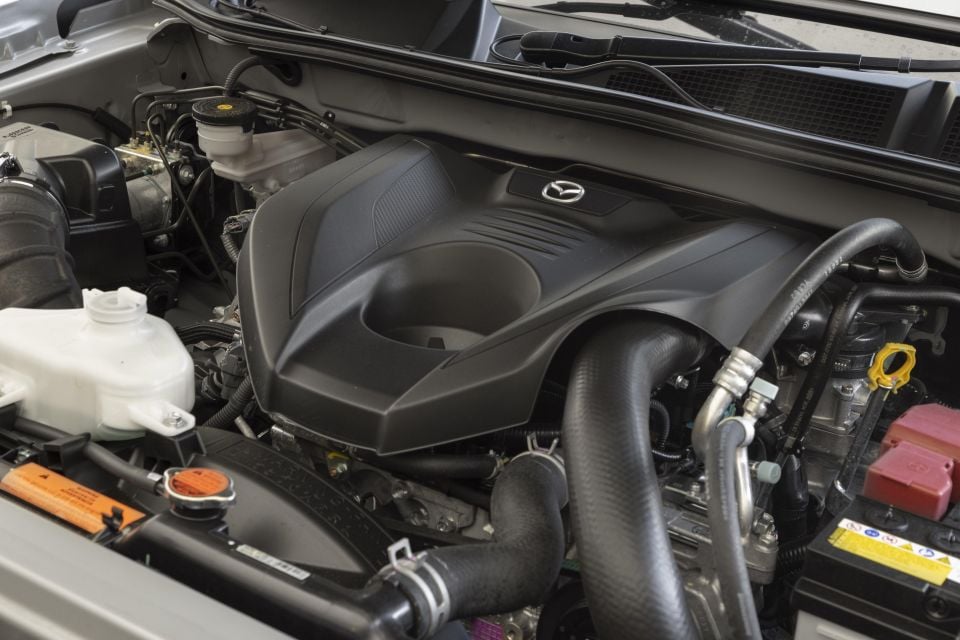
The BT-50 uses a 3.0-litre turbo-diesel four sourced from Isuzu. It produces 140kW at 3600rpm and 450Nm between 1600-2600rpm, and is tied to a six-speed automatic (or six-speed manual) that offers sequential manual shifting functionality.
The autos get a two-speed High-Low transfer case. There’s also on-the-fly switching between 4×2 and 4×4 at speeds up to 100km/h and a locking rear differential. Braked towing capacity is 3500kg.
Claimed fuel consumption is 8.0L/100km for automatic 4×4 versions of the XTR. Opting for a manual reduces consumption by 0.3L.

There are no changes for MY22 and; therefore, no on-road surprises in the way it drives.
The BT-50’s character will be familiar to those who are experienced with the D-Max because they’re pretty much the same underneath, right down to areas such as suspension tuning. Unlike the HiLux or Navara, there hasn’t been any suspension fiddling (yet) in BT-50’s lifecycle and because it was pretty damn good out of the box, so there’s no tweaking demanded.
The big Mazda feels large to drive. Its high ‘Kodo’ look grille adds to a high bonnet line that can be a little trickier than most pick-ups to judge when closing in on an object. That said, BT-50 isn’t a particularly difficult dual-cab to judge in a tight squeeze, even with the poor reversing camera quality affecting reverse parking.
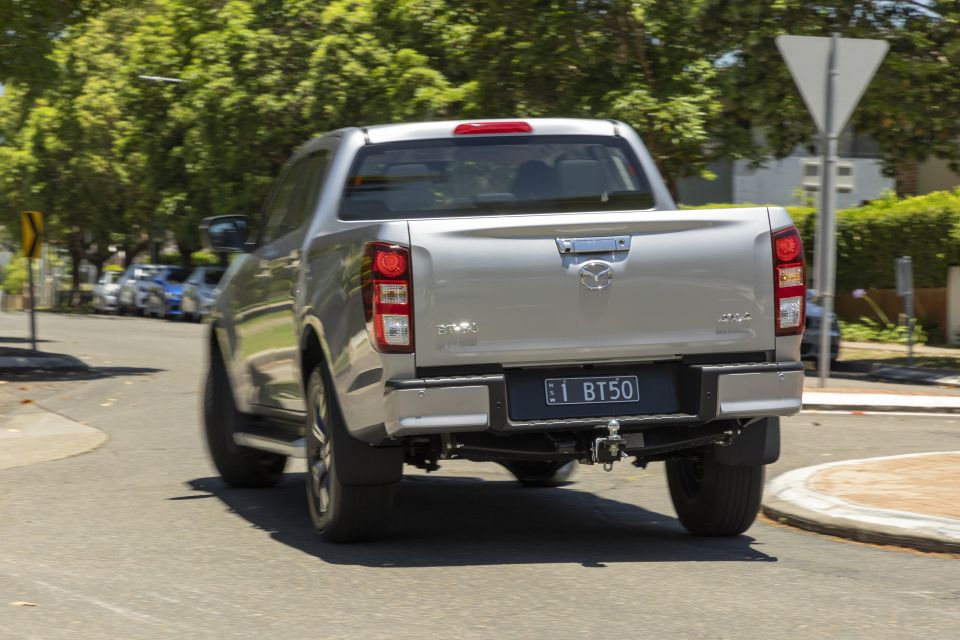
Where expert car reviews meet expert car buying – CarExpert gives you trusted advice, personalised service and real savings on your next new car.
The 3.0-litre oiler and six-speed auto combination is a bit of a mixed bag. It rattles, has a fairly agricultural vibe and has a manner that swells low-rpm torque with a bit of elastic response which makes the engine feel a little duller than you expect under part throttle.
Dig in, though, and it delivers the goods, but it’s not quite as linear and crisp as, say, Ford’s much smaller-capacity BiTurbo four. Its slightly lazy nature also means you’re flexing your right leg more often than seems necessary, which can get a little fatiguing on long drives with a lot of stopping and starting.
The Aisin auto upshifts often – to the point of annoyance. As reported prior, it almost needs a ‘Sport’ drive mode, just to make it more drivable and responsive.
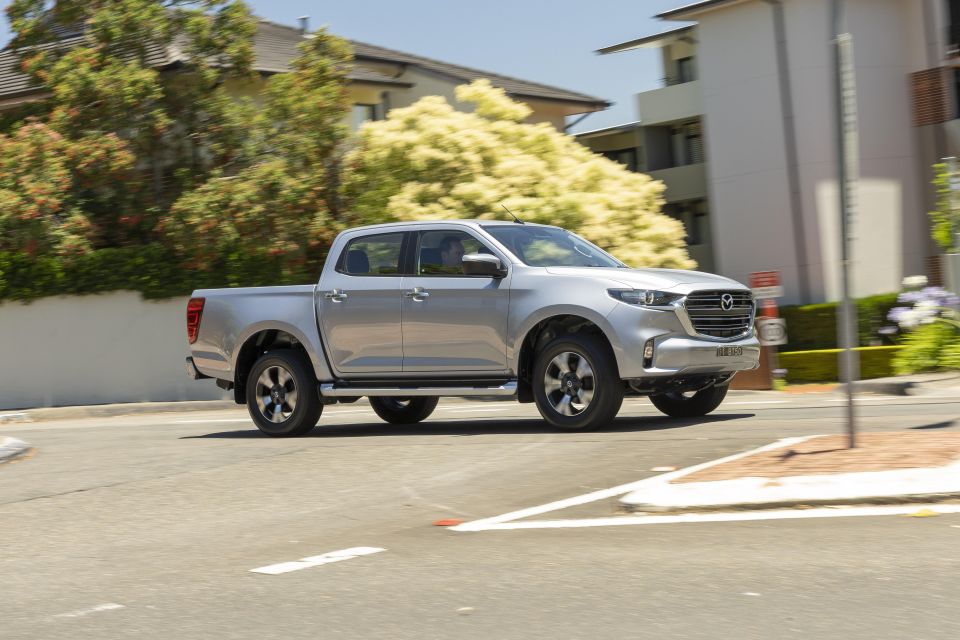
Elsewhere, there’s goodness and premium aspects in its manner. The electric steering is light, reasonably direct and quite crisp. Are you listening, Toyota?
Also, once the din of the diesel calms down on a constant throttle it becomes impressively quiet. The brakes, too, are well free of any spongy pedal weirdness or abruptness from the disc-drum design.
On the move, the BT-50 is mostly composed and fairly well settled. The Only exception is hitting a speed bump, where an unladen track can send the rear end pitching and skipping a little. Ride is firm, if not punishingly so, with a bit of fidgeting at low speed that smooths out quite nicely once speeds climb.
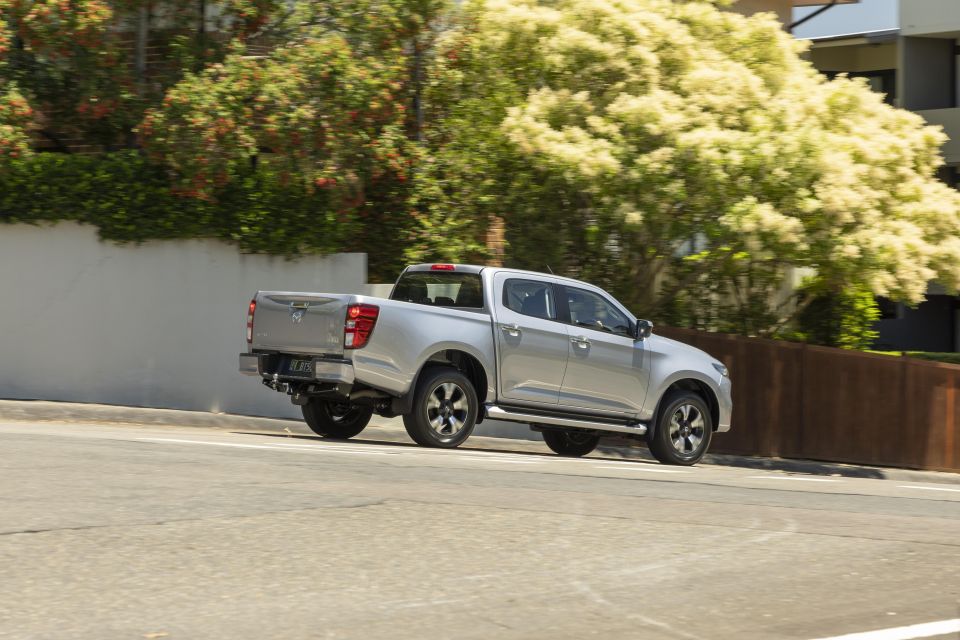
During some light-duty off-roading the BT-50 proves a capable and faithful ally. There is a strong sense of under-stressed purpose that’ll encourage you to venture deeper into the mulga than we did on test.
Traction-wise, it copes with corrugations well, despite transmitting the lumpy surface through into the cabin. However, I never felt it lose composure or get too far out of shape once you decide to push on at a decent clip.
In fact, it’s often more flustered on the road, mostly due to the overly sensitive safety assistance. The front collision warning system triggers early, the rear cross traffic alert system is quite hyperactive (and very loud), and the blind-spot warning system puts on a helluva fight out on the open road when it senses another vehicle well behind in an adjacent lane.
Some of it can be switched off, but most of it you have to learn to live with.

Mazda offers a five-year, unlimited-kilometre warranty on the BT-50, with five years of roadside assistance.
Servicing is required every 12 months or 15,000kms, whichever comes first.
Costs for all BT-50 4×4 automatic variants are $418, $390, $673, $496 and $312 for the first five services through to 75,000km.
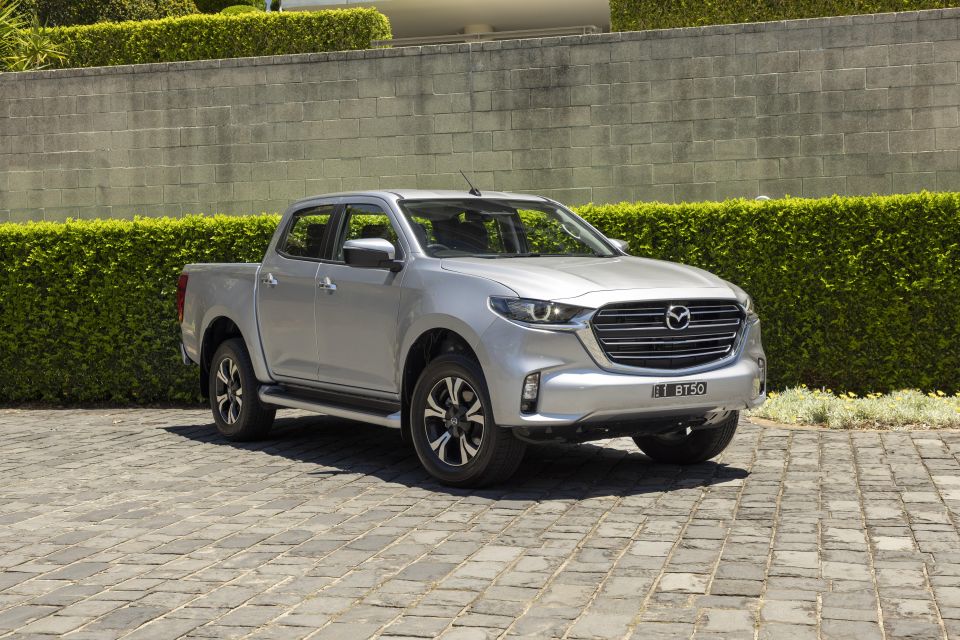
The mid-spec BT-50 was a good thing at first impression around the time of launch, and remains convincingly decent as it settles into its lifecycle.
While its take on styling isn’t to all tastes, it’s no less worthy or capable because of it.
In fact, it brings something a little different to the dual-cab set – smart-if-sombre austerity and freedom from ‘boofy’ sports ostentation (it’s more a strength than a negative).

On merit, it deserves the sort of interest the D-Max enjoys.
The problem is that the more upmarket promise of its styling just isn’t delivered in the experience: it’s less polite than it looks. That said, the experience is pretty much par for the dual-cab course and when you settle into the BT-50, it reveals itself as a damn fine thing to live with.
The XTR pricing is just $3500 shy of the GT, however, and its higher-spec stablemate’s leather-trimmed, fully-electric pews and extra fanciness just might be the upmarket icing the BT-50 needs to convincingly deliver on its ‘nice truck’ pitch.

Click the images for the full gallery
MORE: Everything Mazda BT-50
Where expert car reviews meet expert car buying – CarExpert gives you trusted advice, personalised service and real savings on your next new car.


Derek Fung
1 Day Ago


Damion Smy
4 Days Ago


Ben Zachariah
6 Days Ago


James Wong
12 Days Ago


Ben Zachariah
13 Days Ago
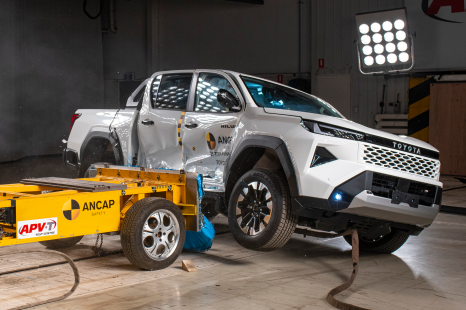

William Stopford
13 Days Ago